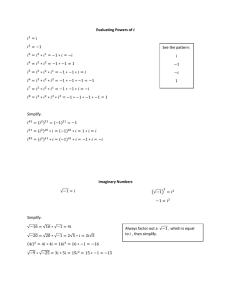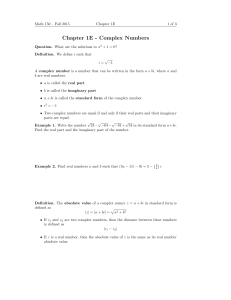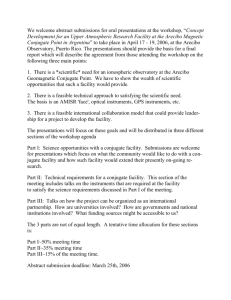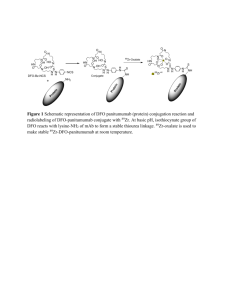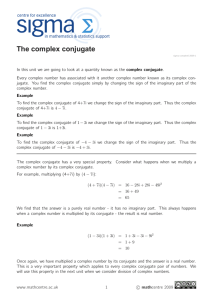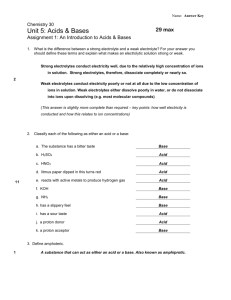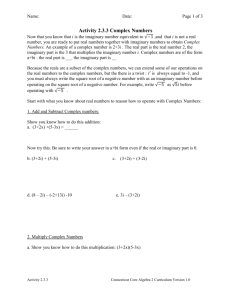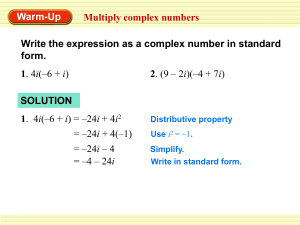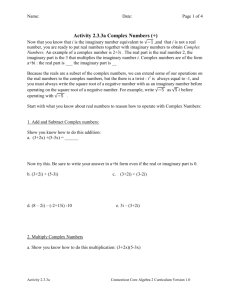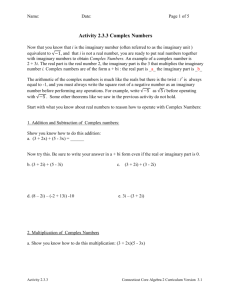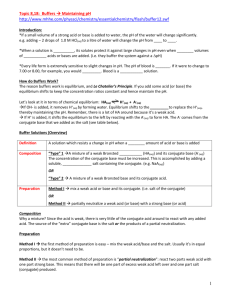Dividing Complex Numbers
advertisement
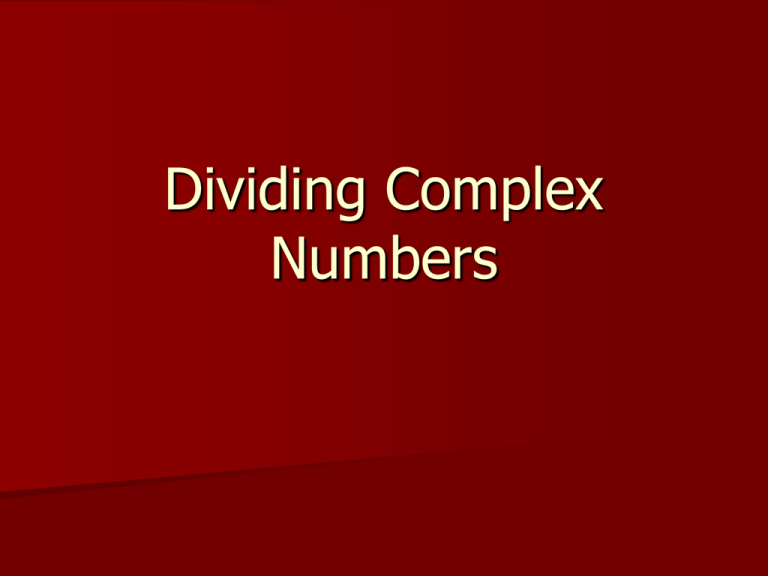
Dividing Complex Numbers Before we begin Last time we learned about the “imaginary numbers.” Numbers like 4i and -3i are called “pure imaginary” because no real number has been put with them. When you put a real number and an imaginary number together, like -3 + 2i, its called a “complex number.” Conjugates of complex numbers To get the conjugate of a complex number, you change the sign in the middle. The conjugate of 3 + i is 3 – i The conjugate of -9 – 6i is -9 + 6i Conjugates of Pure Imaginary Numbers What about the conjugate of 4i ? 4i written in “complex form” would be 0+4i and its conjugate would be 0 – 4i So to make it simple, the conjugate of 4i is -4i, the conjugate of -9i is 9i , see? Dividing Complex numbers This is really easy, because you don’t really do any dividing. 2 + 3i 2i What makes this easy is that you’re looking at the answer…its just not in simplest form, yet 2 + 3i 2i -2i -2i = -4i – 6i -4i 2 2 = -4i + 6 4 = 3 – 2i 2 To simplify, just multiply the top and bottom by the conjugate of the bottom. Then simplify the whole fraction Problem -2 + 3i 5 + 2i 5 – 2i 5 – 2i = -10 + 4i + 15i - 6i 25 – 4i 2 = = 2 -10 + 19i - (-6) 25 – (-4) -4 + 19i 29 Multiply top and bottom by conjugate of bottom Problem : Find the reciprocal of 5 i 3 Since the reciprocal of a number is just 1 over the number, the reciprocal would be… 1 5 i 3 √5 + i √3 √5 + i √3 = √5 + i √3 8 Now simplify by multiplying the top and bottom by the conjugate of the bottom, just like before. One more…. This is the easy one. If you have one term with an i on top and one term with an i on bottom, the i ‘s will cancel 3i 5i = 3 5
